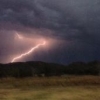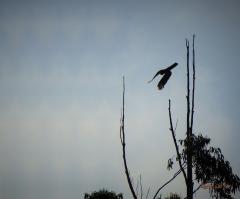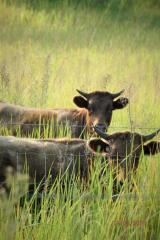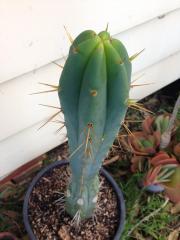-
Posts
1,079 -
Joined
-
Last visited
-
Days Won
2
Content Type
Profiles
Forums
Events
Blogs
Gallery
Store
Everything posted by ∂an
-
one of the good things about the potency of rustica is that, in my experience, it prevents habitual and casual use patterns, and demands a respectful setting. pretty much every time I have smoked or vaped it casually for a nicotine high, it has left my throat and mouth sore for many days. I have found an aqueous extract that is snorted to be a good administration method. not sure if the extracts I have made are anywhere near the potency of the traditional preparations (rapé, ambil etc) described from the amazon and peruvian high lands though... an aqueous extract it is also useful as an insect repellant and herbicide.
-

Making sense of HBWR
∂an replied to TheMooseZeus's topic in Sustainable Technologies & Ethical Living
how many seasons did your plants take until they set seed? I have heard that some plants do not seem to set seed, even after 3 or 4 years of growth. -
Pretty sure it is p. antillarum, the "weed panaeolous". When they are young they can sometimes appear similar to p. cyanescens, but at this more mature stage they are quite distinct. The usual antillarum differentiators for me are the silvery convex cap with a distinctive smooth texture, and the slightly thicker stem that turns a very light brown rather than blue when bruised (i.e. squished and left in your pocket for 5 minutes as you moo-ve on through the green fields). It is interesting observing the different "paddock" mushrooms. Usually antillarum will fruit first (even in late winter), as it appears to not have such stringent humidity, moisture and temperature requirements as cyanescens and cubensis. One or the other usually dominates too - i.e. a field will have either mostly antillarium, mostly cyanescens or mostly cubensis. Just as antillarum drops off, one of the others will pop up. I guess they have evolved to fulfil slightly different climatic niches. Here are some pics of some active panaeolous (not sure if cyanescens or cambodginiensis etc) for reference:
-
If they have dark spores and the white flesh turns blue when bruised, then they are probably panaeolous cyanescens. Lots of them throughout NSW at the moment. Typically they are mostly white with a yellow patch at the crown, but under certain circumstances they can appear yellow/golden all over the cap. But there are other dung mushrooms that are a rusty "golden" colour all over including the gills and spores, so to be sure of an ID post a picture.
-
-
-
-
see this post:
-
very interesting, I didn't know about those experience reports on erowid where coleus was also found to catalyse other worldly dreams. my experience was with a majority green coleus with red colouration in the centre of the leaves, combined with caapi. I no longer have that coleus plant unfortunately. Christian Rätsch's book Encyclopaedia of Pyschoactive Plants has some interesting info in the entry for coleus blumei. Here is a summary: originally from SE asia, brought to south america post-conquest psychoactive use amongst the Mazatecs was discovered in 1962 in connection with Gordon Wasson's research into salvia divinorum [1] Mazatecs consider coleus to be in the same "family" as salvia, and has been reported to be used as a substitute for salvia (no reference given) however Daniel Seibert reported that he only ever met one person in the area of the Mazatecs who maintained that coleus was psychoactive [2] is used medicinally in Samoa, SE Asia and PNG to treat various maladies including digestive issues and headaches [1,3,4] Rosmarinic acid has been biosynthesised in cell cultures of coleus blumei [5,6] a diterpene (forskolin = coleonol) that is potently bioactive has been found in coleus forskohlii [4,7] salvinorin-like substances have been isolated from coleus blumei (no reference) 1. Ott 1993 2. Schuldes 1995 3. Uhe 1974 4. Valdes et al 1987 5. Häusler 1992 6. Meinhard 1993 7. D McKenna 1995 So it would appear that there are definitely some bio active compounds in some coleus plants, however its use as an effective shamanic intoxicant is inconclusive.
-
It was a while ago now, but the leaf was probably a bigger one, so about the size of a hand. It was the common green with purple flecks coleus. I'm not sure it was the coleus that induced the dream, as caapi itself would be enough to induce a non-ordinary brain state, and vivid dreams are not uncommon for me. But reading my description again, this was probably one of the more far out dreams I have had!
-

Making sense of HBWR
∂an replied to TheMooseZeus's topic in Sustainable Technologies & Ethical Living
HBWR has been an ephemeral medicine for me too. About 10 years ago I took a really large dose (~13 seeds crushed in water with lemon juice). It was one of the most intense psychedelic experiences I have ever had, with very overt hallucinations and profound thoughts - including, interestingly enough and related to this discussion, that this plant must have been utilised by humans in the past. The trip coincident with me getting a bad flu, which all combined to make it a really difficult experience, but one that I always remember. Now I find myself only taking HBWR when other more preferable medicines such as cactus and mushrooms are not available. One very useful quality of HBWR is that it seems to readily allow sleep. Just one or two seeds seems to be sufficient. A beautiful but complex plant. Namaste. -
how did your plant go in its first winter? did you provide a micro climate for it? thanks
-
okay, thanks. this plant is in its first season at its new location, after being purchased as a bare rooted yearling in August. it probably will need to be nursed through its first winter here, lest it not recover after loosing leaves. a mini green house with hessian might do the trick for the caapi and other tropicals. good luck with your vine!
-
Does anyone know if caapi will tolerate a few weeks of ~2 degree minimum nights in winter?
-

Columnar Flower Buds. Got some ? Post them here.
∂an replied to Hellonasty's topic in Cacti & Succulents
-
okay great. Looks like my first flower is days away now. I will collect pollen and get in touch to see if you want to make a trade. The last developed flowers look like they are a good month away so should be a chance to pollinate them with some yowie pollen. thanks!
-
I have a scopulicola cactus whose first flower looks like it will open in the next few weeks: If anyone has some spare trichocereus pollen, I will do my best to pollinate the flower (never done it before), and provide in return at least half the resulting seeds. Cheers!
-

What did you do in your sacred garden today?
∂an replied to theuserformallyknownasd00d's topic in Ethnobotany
Today I went collecting lots of weeds to make compost tea, and watered the garden about 3 times as it was so hot and lots of fun too. Vine and rubiaceae are chilling in a plastic tub to maintain some humidity: A forest of other friends are staying cool in the part shade: -
Okay thanks. Great idea! My track record with growing cacti seeds isn't so good as I keep trying to do it outdoors where the birds, possums, slugs and snails get into them when they pop up. So I'd definitely be keen for a pollen and seed trade! I would be happy to pass the seeds on to someone who has the setup already. I guess the flower still has a month or so to go?
-
Thanks for the very helpful comments! Looks like my first step should be to get the propagation environment setup. I'd like to try and make do with what materials I currently have available, so I will probably go with the plastic tub option Glaukus mentioned. I used a plastic tub filled with a bit of water and bottom heated to successfully get some mail ordered aya and chacruna plants established at the end of winter. Now that it is warmer probably won't need any heating, but I will monitor humidity and temp to make sure. I might take just a few cuttings to start with to ensure my method is working. Will post pics as I progress... cheers!
-
-
















